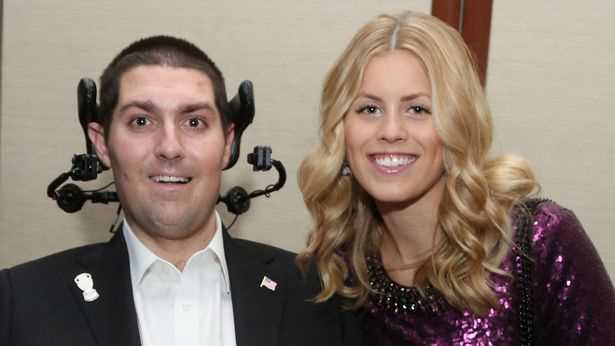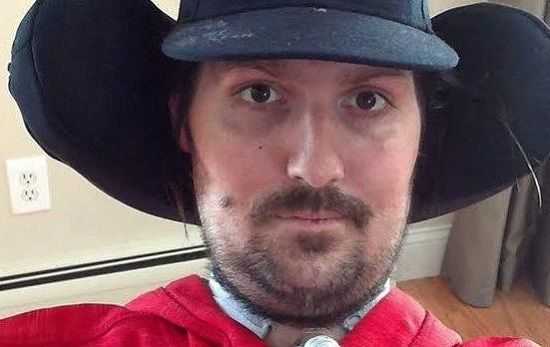The year 2014 was a defining one for charity campaigns with the ALS Ice Bucket Challenge capturing the hearts of millions around the world. For Pete Frates, the challenge wasn't just a viral sensation, but a personal mission to raise awareness about the debilitating disease that had taken its toll on his own life.
Pete Frates was an American athlete and philanthropist born on December 28, 1984. He was an outstanding student-athlete at Boston College where he played baseball. As a baseball captain, he led his team to the College World Series in 2007. Later, he played in Europe and coached the BC baseball team while battling with ALS (Amyotrophic Lateral Sclerosis).
Frates was diagnosed with ALS in 2012 at just 27 years old. From that moment on, he dedicated his life to raising awareness and funds to fight the disease. The ALS Ice Bucket Challenge was born out of his efforts to bring attention to the disease and help find a cure. The fundraising campaign became a global phenomenon, raising more than $115 million in just eight weeks.
Pete Frates passed away on December 9, 2019, at the age of 34, but his legacy lives on through the awareness and funds raised for ALS research thanks to his tireless efforts and vision.
The Early Life of Pete Frates
Pete Frates was born in Beverly, Massachusetts in December of 1984. He grew up in this small coastal town with his parents and siblings. As a child, Pete was active in sports and played baseball, soccer, and hockey. He attended St. John's Preparatory School where he was a standout athlete.
After graduating from high school, Pete went on to study at Boston College where he played baseball and was captain of the team in his senior year. He graduated in 2007 with a degree in communication. During his time at Boston College, Pete formed strong relationships with his teammates and coaches, which would serve him well in the future.
After graduation, Pete pursued a career in professional baseball. He played in the minor leagues for a few years, but ultimately decided to retire due to injuries. He then began working as a marketing director for a company in Boston, but his passion for sports and his desire to make a difference in the world led him down a different path.
The Emergence of the ALS Ice Bucket Challenge
In the summer of 2014, the ALS Ice Bucket Challenge exploded onto the scene, taking social media by storm. The challenge was simple, yet effective: dump a bucket of ice water over your head, nominate others to do the same, and/or donate money to ALS charities. Within weeks, the challenge had gone viral, with celebrities, politicians, and everyday people participating in droves.
The ALS Association, which had been struggling to raise awareness and funds for research into amyotrophic lateral sclerosis (ALS), also known as Lou Gehrig's Disease, could not have asked for a better platform. The Ice Bucket Challenge raised over $220 million for the organization worldwide, with $115 million alone going to the American branch.
But what made the challenge so successful? Many attribute its virality to the power of social media, with people sharing videos of themselves completing the challenge on platforms like Facebook, Instagram, and Twitter. However, the challenge's origins lie in the efforts of two men: Pete Frates and Pat Quinn, both of whom were diagnosed with ALS and sought to raise awareness and funds for the disease's research.
Pete's Legacy and Impact on ALS Awareness
Pete Frates' legacy lives on through the ALS Ice Bucket Challenge, a viral social media campaign that raised over $115 million for ALS research and brought global attention to the disease
Despite being diagnosed with ALS at age 27, Pete refused to let the disease define him. He dedicated the remaining years of his life to raising awareness for ALS and advocating for more funding for research.
Pete's courage and determination inspired a movement of people from all around the world to take action and make a difference. He proved that even in the face of immense adversity, we have the power to create positive change and impact the lives of others.
Thanks to Pete's tireless efforts, ALS is no longer an obscure disease that few have heard of. The Ice Bucket Challenge brought it to the forefront of the public consciousness and spurred unprecedented support for ALS research.
Pete's impact on ALS awareness and research will continue to be felt for years to come. We can all honor Pete's legacy by continuing to support ALS research and make a difference in the lives of those affected by the disease.
“Be relentless in your pursuit of making the world a better place for you being in it." - Pete FratesA Look into Pete's Personal Life
Childhood and Education
Pete Frates was born on December 28, 1984, in Beverly, Massachusetts. He grew up in a close-knit family with his parents, brother, and sister. Pete attended St. John's Preparatory School in Danvers, Massachusetts, where he played baseball and hockey. He went on to study at Boston College, where he played baseball as a center fielder and graduated with a degree in communications in 2007.
Marriage and Family
In 2013, Pete married his longtime girlfriend, Julie Frates. The couple had been together for over 10 years and had a daughter named Lucy. Pete was a devoted husband and father, and his family was the most important thing to him.
Hobbies and Interests
Pete was a sports enthusiast and loved playing and watching all kinds of sports. He was an avid Boston Red Sox fan and enjoyed traveling to different ballparks to watch games. He also loved playing golf and spending time with friends and family. Pete was known for his infectious smile and positive attitude, and he brought joy to everyone he met.
The Importance of Spreading Awareness through the ALS Ice Bucket Challenge
The ALS Ice Bucket Challenge was an online trend that took social media by storm in the summer of 2014. It involved participants dumping a bucket of ice water on their heads and challenging others to do the same, all in the name of raising awareness and funds for ALS (Amyotrophic lateral sclerosis), a neurodegenerative disease that affects nerve cells responsible for muscle movement.
What made the ALS Ice Bucket Challenge so important was its ability to reach a massive audience in a short amount of time. The challenge went viral, with celebrities, politicians, and everyday people all taking part. It raised millions of dollars for ALS research and funding in just a few weeks.
Most importantly, the challenge put a spotlight on the struggles of those living with ALS and increased public empathy for those affected by the disease. It allowed for people to connect with each other over a common cause that had a positive impact on society as a whole.
While the ALS Ice Bucket Challenge may have lost its initial popularity, its impact is still felt today. The success of the challenge proved that social media can be a powerful tool for spreading awareness and bringing people together for a cause. It also reminded us of the importance of supporting those who are affected by rare diseases and the need for continued research and funding for treatment and cures.
In the end, the ALS Ice Bucket Challenge was much more than just a viral trend. It was a movement that brought people together, inspired generosity, and changed the lives of many affected by ALS.
FAQ:
Who is Pete Frates, and how did he create the ALS Ice Bucket Challenge?
Pete Frates was a former collegiate baseball player who was diagnosed with ALS in 2012. He and his friends, including fellow athlete Pat Quinn, created the Ice Bucket Challenge to raise awareness and funds for the disease. They challenged their friends and family to dump a bucket of ice water over their heads and donate to ALS research. The challenge went viral and raised over $220 million for the cause.
Did the Ice Bucket Challenge actually help ALS research?
Yes, the Ice Bucket Challenge was a huge success in raising both funds and awareness for ALS research. The ALS Association reported that the money raised helped to fund the discovery of a new ALS gene and a potential new drug target. It also supported the launch of a global clinical trial that will test new treatments for the disease.
How did Pete Frates handle his ALS diagnosis?
Pete Frates was known for his positive attitude and advocacy in the face of his ALS diagnosis. He refused to let the disease hold him back and became an inspiration to many. He and his family started the Pete Frates #3 Fund to support ALS research and his legacy continues to inspire others to this day.
What was Pete Frates's impact on the ALS community?
Pete Frates's impact on the ALS community was immeasurable. He raised awareness of the disease and brought attention to the need for increased research funding. He also served as an inspiration and source of hope for those affected by the disease. The Ice Bucket Challenge, which he co-created, raised millions of dollars for ALS research and has been credited with helping to advance understanding of the disease and potential treatments.
What legacy did Pete Frates leave behind?
Pete Frates left behind a lasting legacy of hope and activism. He inspired others to take action against ALS and raised millions of dollars for research. His courage and advocacy continue to inspire and motivate people around the world to fight for a cure for ALS and other diseases. His family and friends continue to honor his memory through the Pete Frates #3 Fund and other initiatives aimed at raising awareness and funds for ALS research.







